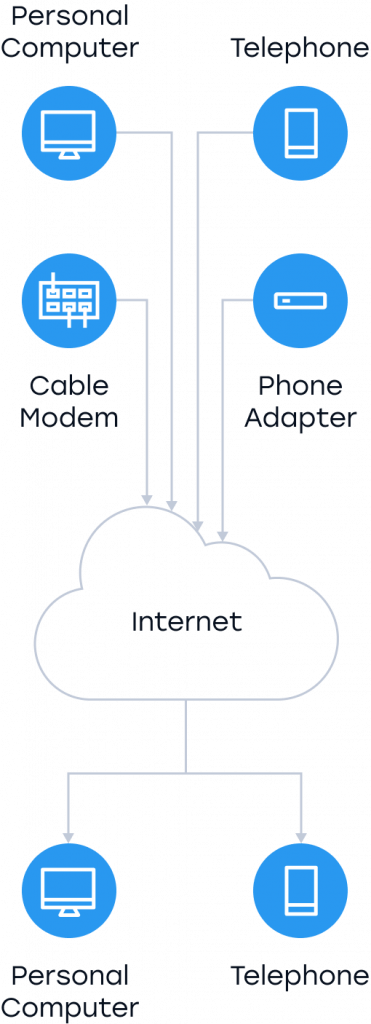VoIP endpoints usually use unique codecs, standard codecs, or International Telecommunication Union (ITU). Some protocols used in VoIP include Session Description Protocol (SDP), TCP, Real-Time Transport Protocol (RTP), and many others.
VoIP provides users and businesses features such as custom caller identification, call recording, etc.
How VoIP Works
VoIP simply operates by transforming your voice into a digital signal that can be transmitted over the internet. With phone calls, conversations are created in small packets, and the transmission takes less than a second.
For telephony to be achieved, the packets are transmitted between the phone and a VoIP provider.

VoIP in 3 Steps
- The VoIP phone is connected to a LAN.
- By dialing a phone number, your VoIP provider is alerted to call the other user. The VoIP provider then facilitates data packet exchange between the two connected parties.
- The digital signals are converted back to audio by the VoIP.
The only equipment required to make this call is a broadband connection, a computer, a specialized phone, or a smartphone.
Why Use VoIP?
-
Increased Functionality
With VoIP, the sky is not the limit. VoIP provides functionality beyond traditional phones, including increased accessibility and automatic call routing.
-
Lower Costs
Compared to traditional sources, VoIP calls costs less. International calls are also cost-friendly with VoIP.
-
High-Quality Sound
Uncompressed data formats in VoIP signals produce high-quality sound.
VoIP Disadvantages
Inability to directly connect to emergency services, the need for high-speed internet connection and downtimes during power outages are the major turn-offs in VoIP.